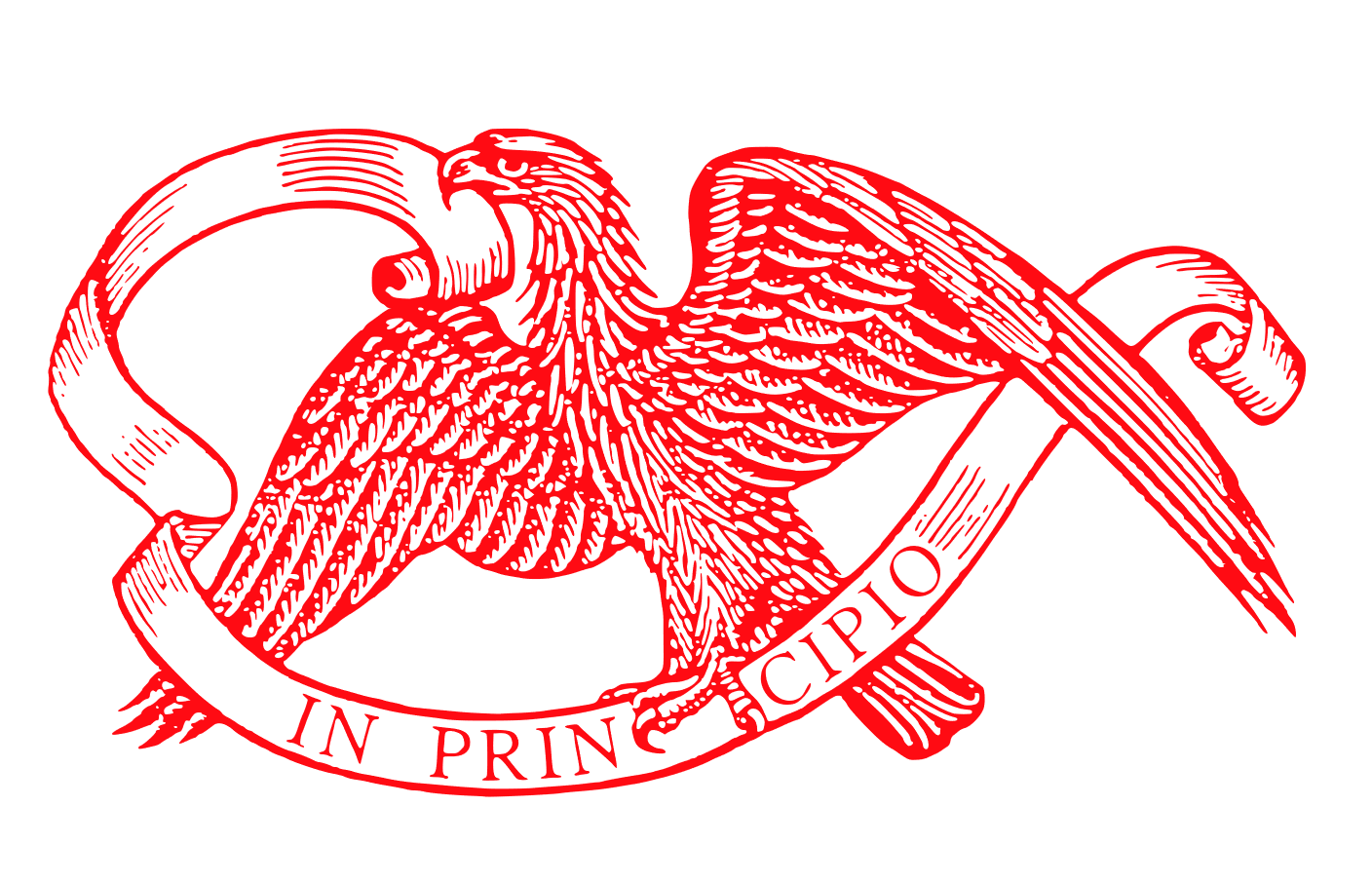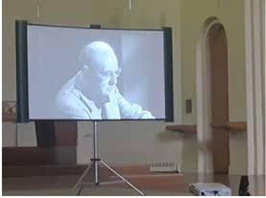The Tri-History Conference of the Episcopal Church
I was privileged this year to accept an invitation to address the Tri-History Conference of the Episcopal Church, held in Toronto at Wycliffe College and the University of Trinity College in June. As its name suggests, the conference is held every three years under the sponsorship of three Episcopal historical societies – The Historical Society of the Episcopal Church (HSEC), The National Episcopal Historians and Archivists (NEHA), and The Episcopal Women’s History Project (EWHP).
This year, The Canadian Church Historical Society was a co-host, with additional support provided by The Anglican Foundation. Our theme related to trauma and survival in the Church, understood in a broad sense with topics covering a range of periods of conflict and transition in Anglican history.
I set out by train Monday morning after a busy Synod weekend. We had not realized the victory parade for the Raptors was taking place that day. Although it had ended several hours earlier, the streets were still full, and it was a good hike from Union Station to my dad’s car.
The then-Primate celebrates the Solemn Mass in Trinity College Chapel
On Tuesday evening, the conference kicked off with Mass in the Trinity College Chapel, where the Primate of All Canada celebrated and preached in one of his last acts before retiring at General Synod the next month. Following a reception, we heard the keynote address from Eric Taylor Woods, a Canadian sociologist at a university in London, England, on the Indian residential school system.
Bishop Terry Brown, President of The Canadian Church Historical Society, preaches
I was very grateful that the conference organizers waived my registration fees in exchange for some very light administrative duties. On Wednesday, I gave a presentation on the history of the ordination of women in the Anglican Church of Canada. It was daunting to tell this story to an audience that included key players in it, such as Bishop Victoria Matthews (the first woman in the Canadian episcopate) and Canon Alyson Barnett-Cowan (one of the first women priested in Canada, and the former directory of Unity, Faith and Order for the Anglican Communion Office).
In the evening, we visited the nearby Church of St. Mary Magdalene – Mother Wendy’s home parish where she was ordained Deacon when I was still in seminary at Trinity. The programme for the evening was a concert of works by Healey Willan, perhaps Canada’s foremost composer and the parish’s long-time musician. It began with a short National Film Board documentary about Willan from 1959, and a reflection on his music by Mother Andrea Budgey, Trinity’s chaplain and the Anglican chaplain to U of T.
Man of Music (1959)
On Thursday, we heard a panel anchored by Bishop Matthews and Fr. David Neelands, Trinity’s former Dean of Divinity. Bishop Matthews, after serving as a suffragan in Toronto, and then as Bishop of Edmonton, was translated to Christchurch, New Zealand, and was the incumbent during the tragic earthquakes there in 2010. As the public face of the diocese, she was a lightning rod for heated and often frankly quite ugly public backlash during the controversy over rebuilding the city’s cathedral.
Fr. Neelands acknowledged that he had been implicated less directly in the trauma of which he spoke. His subject was a movement, described as cult-like, which arose at the Church of St Matthias, Bellwoods, in Toronto in the 1960s. St. Matthias is the original Anglo-Catholic church in Toronto – the mother parish of St. Mary Mag, which was founded as its 'suburban' mission (for those who know Toronto's geography, this is pretty funny as it is now slap-bang in the tony downtown Annex neighbourhood).
Like other Roman and Anglo-Catholic clergy (not to mention ministers of many other denominations), this church’s Rector was strongly influenced by the Charismatic Renewal movement, which emphasised the action of the Holy Spirit in the life of the Church, and incorporated Pentecostal practices like speaking in tongues into worship. Faith-healing and a belief in demonic influence were features of a community which became centred at the St. Matthias rectory.
In 1967, a teenage girl, residing with the community under the Rector’s legal guardianship, died when her symptoms of meningitis were mistaken for diabolical malevolence and 'treated' with prayer. A public inquiry followed, and the Diocese of Toronto tightened its regulations around healing ministries. Fr. Neelands was a peripheral observer in this melodrama; a friend had become deeply involved in the St. Matthias community.
In the evening, I made my way to Regent Park in the east end for the Corpus Christi celebration at St. Bartholomew’s Church. With our own parish son Kieran Wilson as MC, the Solemn Mass and Benediction were flawlessly executed, but alas, for the first time in a week of unbroken sunshine, the heavens opened with lashes of rain – at just the right time to drown out the prospect of an outdoor procession.
Kieran Wilson (left) deftly wields the ombrellino
Adoremus in æternam
The conference concluded with an optional field trip. After a final session on Friday morning, a group of us grabbed boxed lunches and boarded a school bus bound for Her Majesty’s Chapel of the Mohawks. The timing was appropriate, as it was June 21, National Aboriginal Day or Indigenous Peoples’ Day.
Located on the outskirts of Brantford, Ontario, near the Canadian/Mohawk border, it is one of only a handful of chapels royal outside the British Isles, and one of two associated with the Mohawk. Its sister is Christ Church Royal Chapel in Tyendinaga (near Belleville, Ontario).
More recently, St. Catherine’s Chapel in Massey College (next door to Trinity’s St. Hilda’s College) has joined their ranks as the third chapel royal within Canada’s borders. The Queen granted the request for royal status, made by Massey College and The Mississaugas of the New Credit First Nation, as a gesture of reconciliation just before National Aboriginal Day in the sesquicentennial year of Confederation. The Mohawk Anglican, while St. Catherine’s remains interfaith.
HM Chapel of the Mohawks, exterior
At the Mohawk Chapel, we were greeted by the dynamic young chaplain royal, the Revd. Rosalyn Elm and its resident historian, Dr. W. Barry Hill, a member of the Wolf Clan, and a soy farmer with a background in engineering. Dr. Hill spoke to us about the history of the chapel, drawing from his book on the subject which was available for sale.
The chapel was a replacement for the original Queen Anne Chapel in the Mohawk community of Tiononderoge, near present-day Auriesville, New York. During the American War of Independence, the Mohawk nation allied with the British. When the revolutionaries triumphed, the Mohawks’ fate was sealed, and they fled north, building the current Chapel (Upper Canada’s first Protestant church) in 1785. Shamefully, the long tract of land they were awarded in return for their loyalty has been gradually whittled down to the reserve that remains today.
Edward VIII's tree stands strong
Still, the Mohawk Nation takes its ties to the Crown seriously. The Chapel has welcomed royal visitors on several occasions, beginning with the then-Prince of Wales (the ill-fated future Edward VIII) in 1919. The tree he planted on the chapel grounds is still standing, and the Bible he signed now bears several other royal signatures. The Primate, Archbishop Linda Nicholls, visited the Chapel this past fall to celebrate the centenary of that first royal visit, and to unveil the Chapel’s new Coat of Arms.
For someone accustomed to the inheritance of the Oxford Movement and the Gothic Revival evidenced in our own parish, the Mohawk Chapel is a fascinating look at a more typical Georgian church of the pre-Tractarian era. Above the altar are the once typically Anglican panels featuring the Creed, Lord’s Prayer, and Decalogue – but in Mohawk (albeit in an archaic transcription opaque to today’s speakers).
European and indigenous images blend in stained glass
Chapel chancel
In addition to Edward VIII’s tree, the grounds are home to the tombs of Revolutionary War hero Thayendanegea (Joseph Brant), who was reinterred from his Burlington estate in 1850, and the poet Pauline Johnson (Tekahionwake).
Tomb of Thayendanegea
The former Mohawk Institute
From the Chapel, we were led to the site of the Mohawk Institute, the former community’s former residential school, which closed in 1970. Like many residential schools, it was the site of unspeakable abuses for which the Anglican Church of Canada is now committed to a process of atonement and reconciliation. Today, it is home to The Woodland Cultural Centre, which showcases the history of the school and community. As it was National Aboriginal Day, the centre was closed and we were able to see only the exterior of the school.
Hearing the story of this community’s resilience and seeing it inscribed in the features of such a holy and historic site was a humbling and inspiring way to end a week of wrestling with questions of trauma and upheaval.
Geoff











